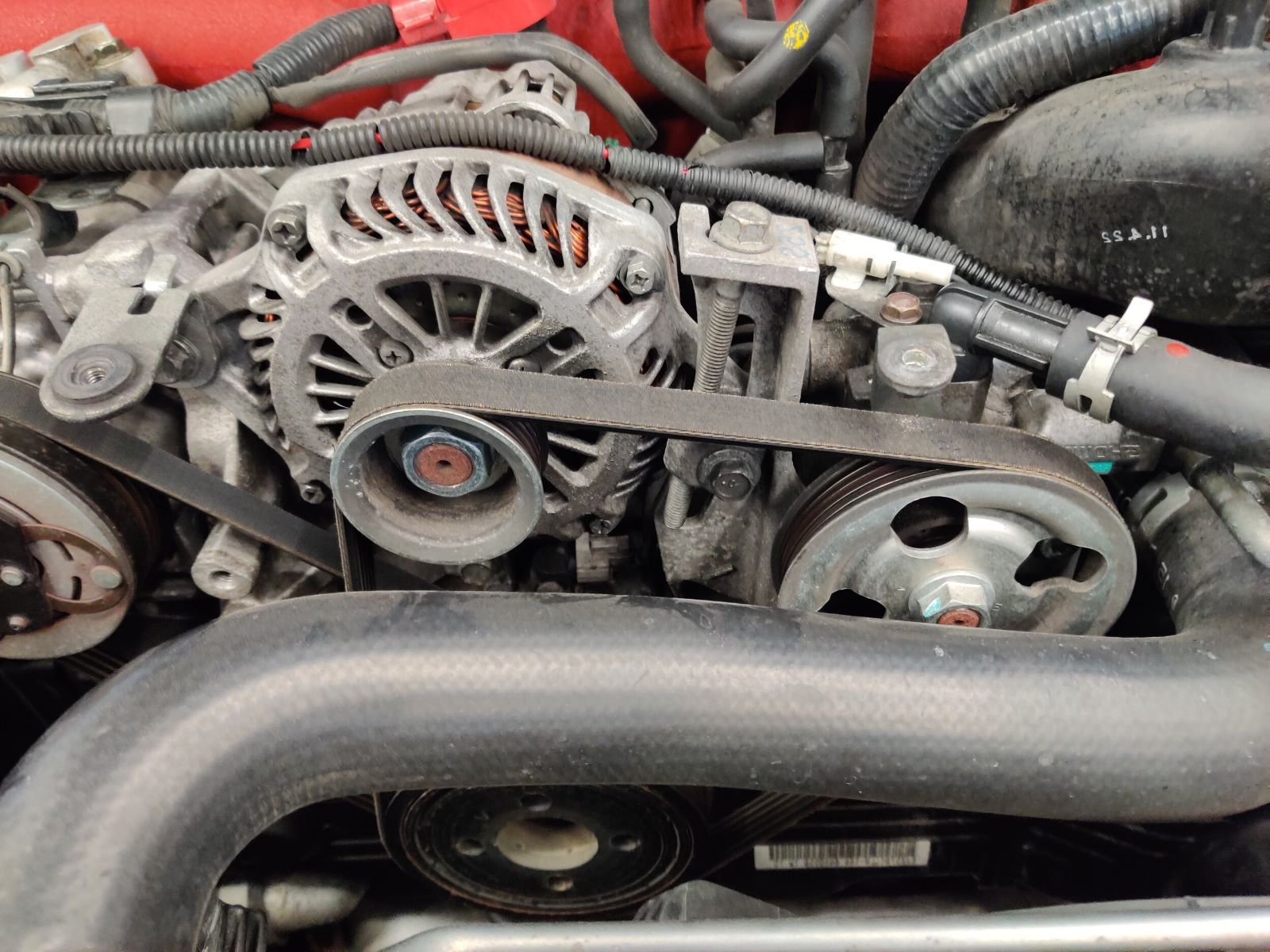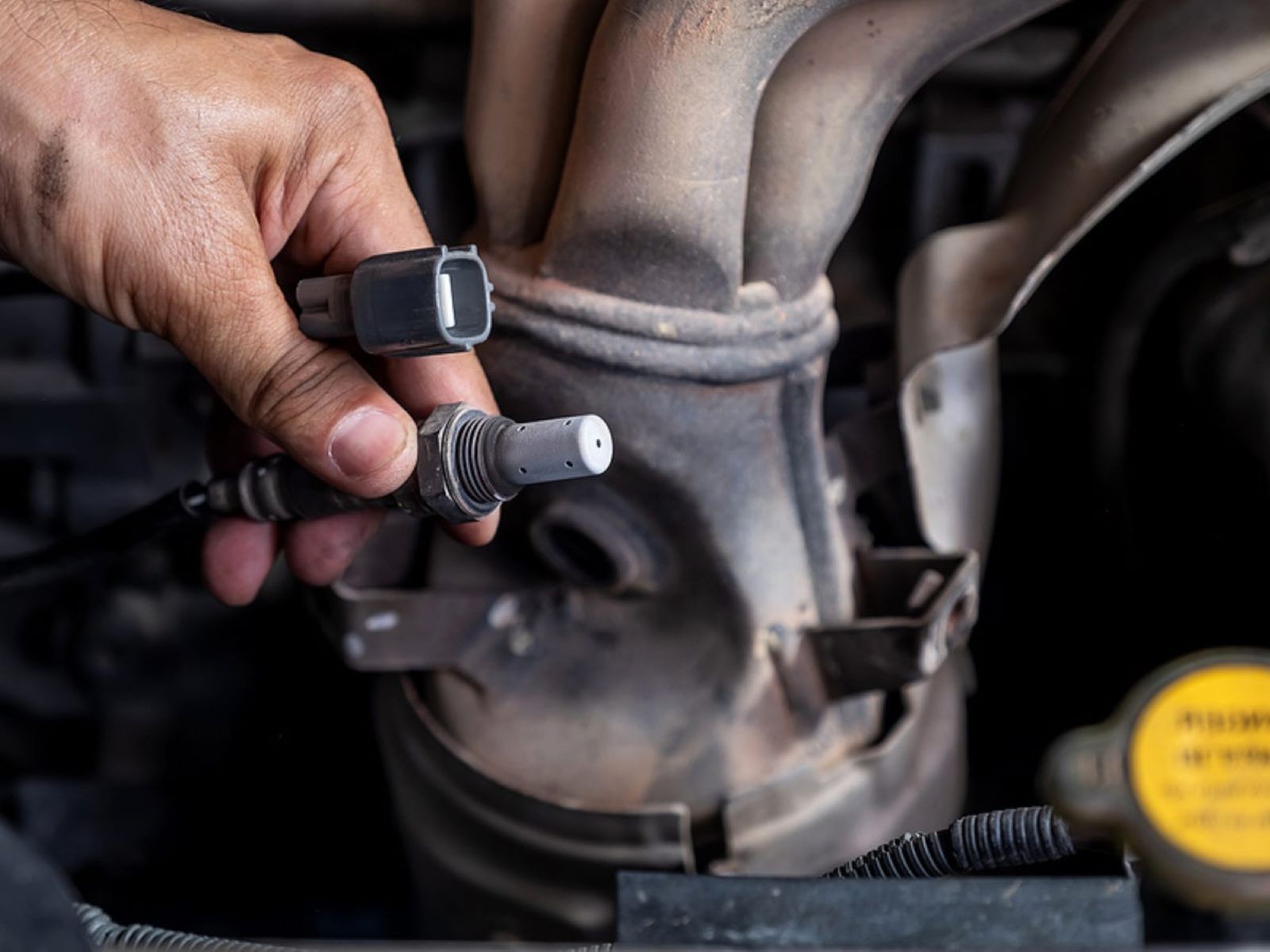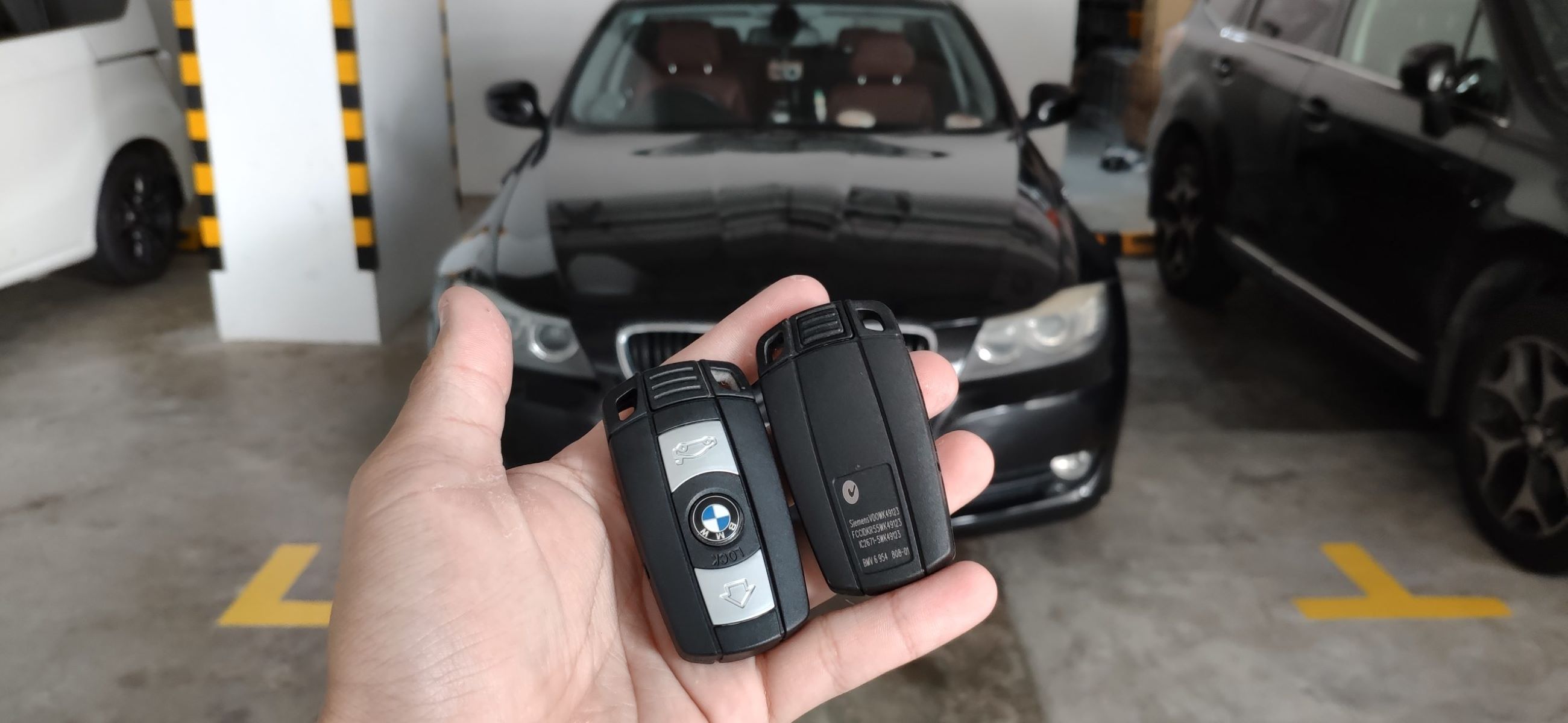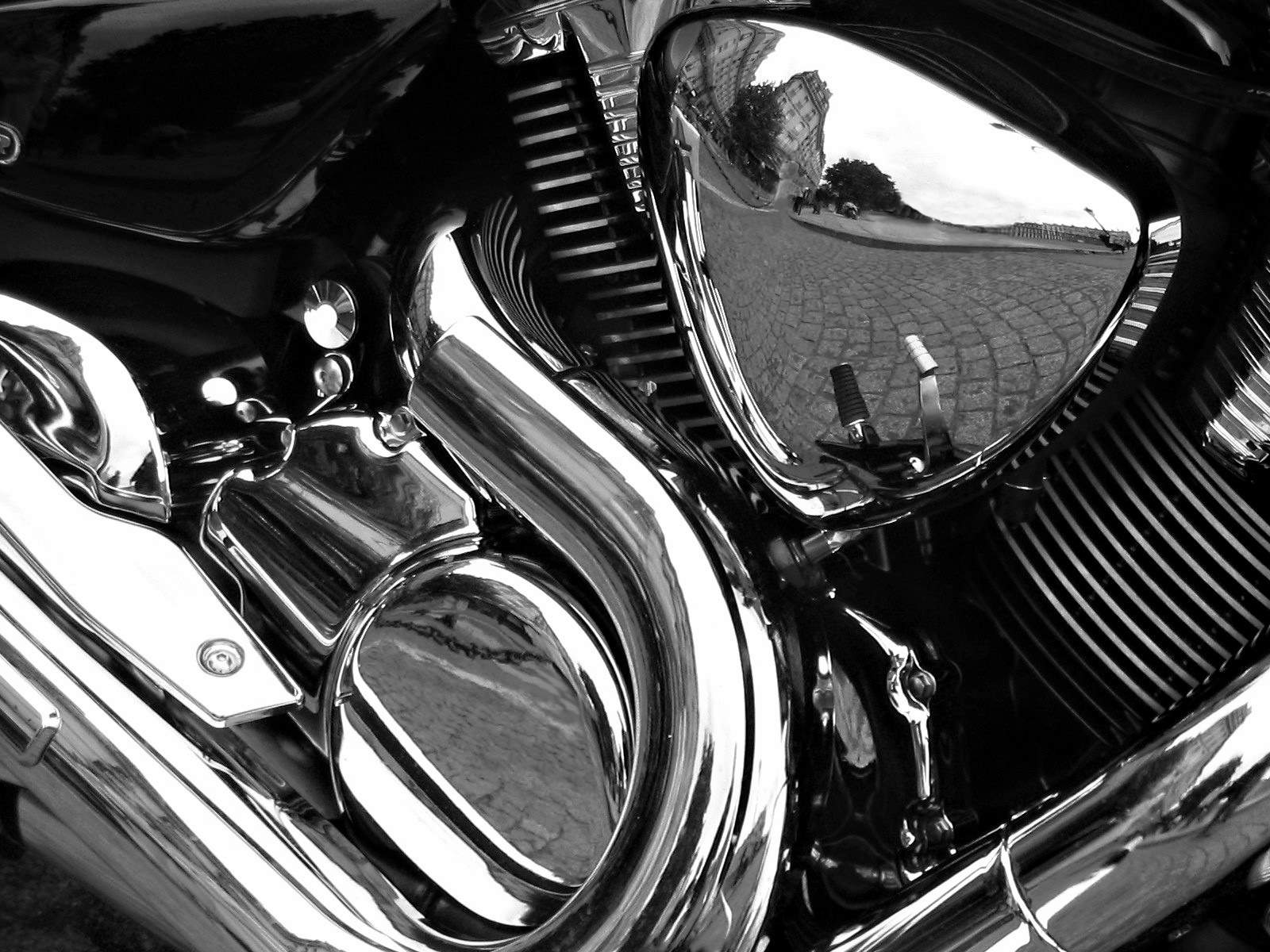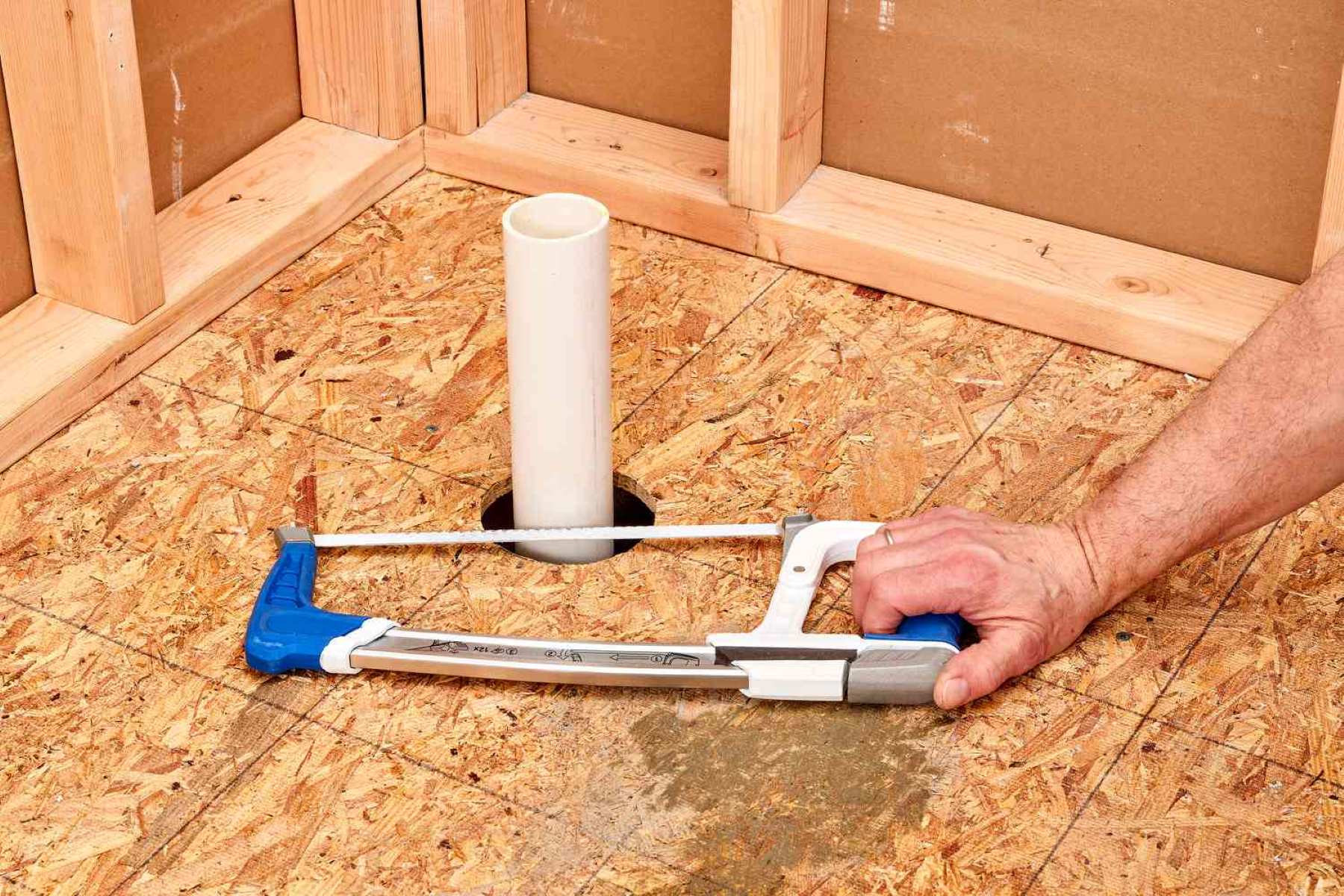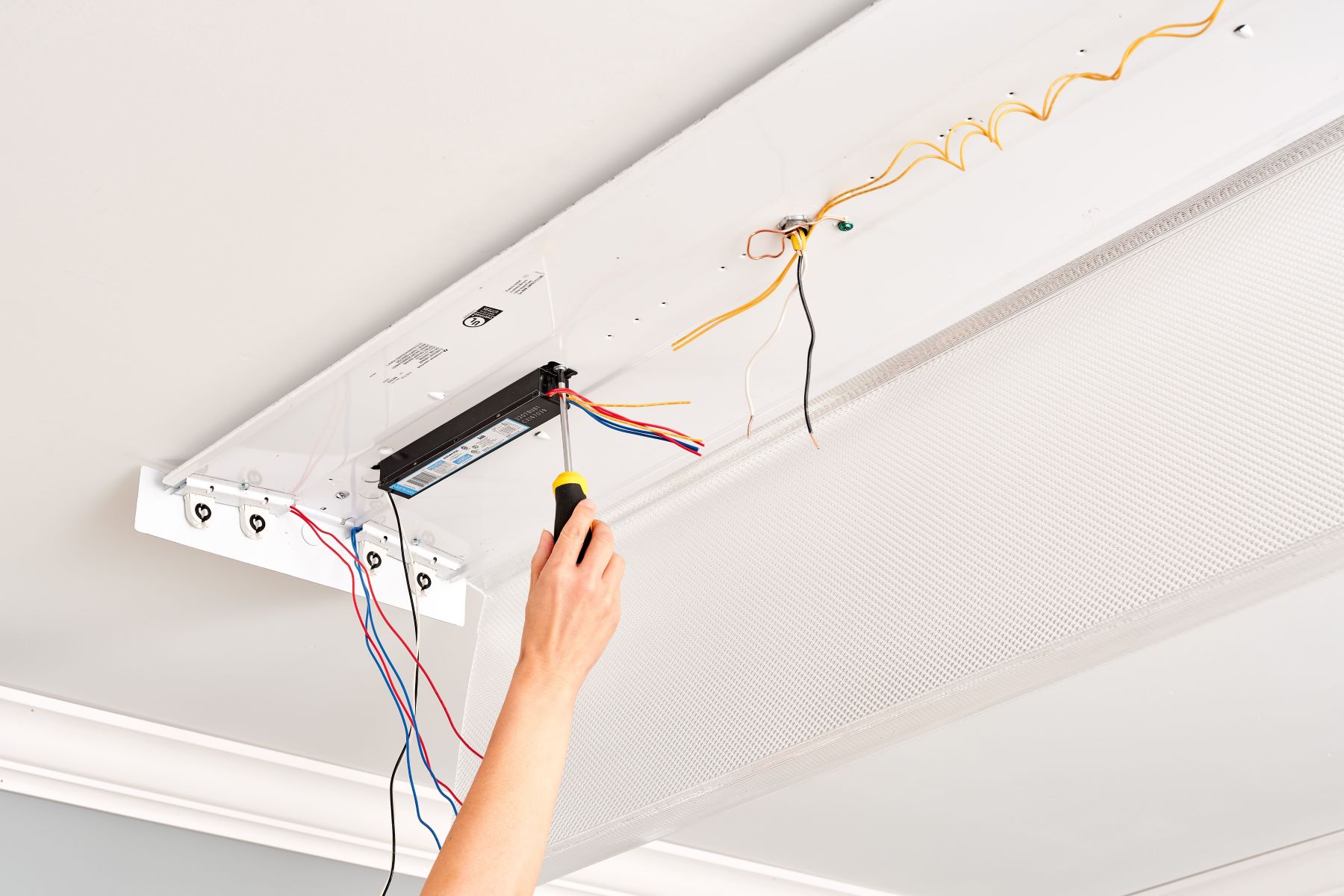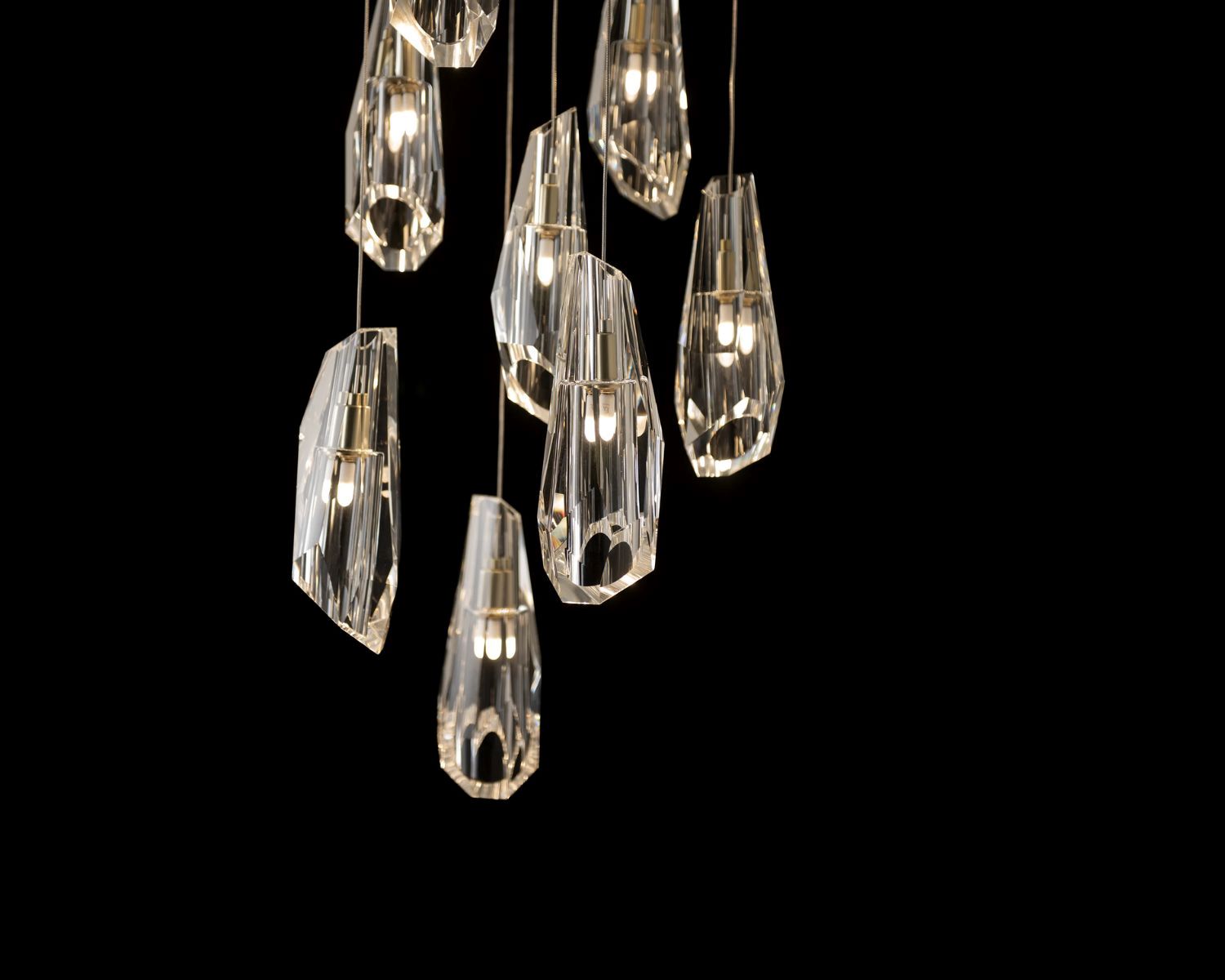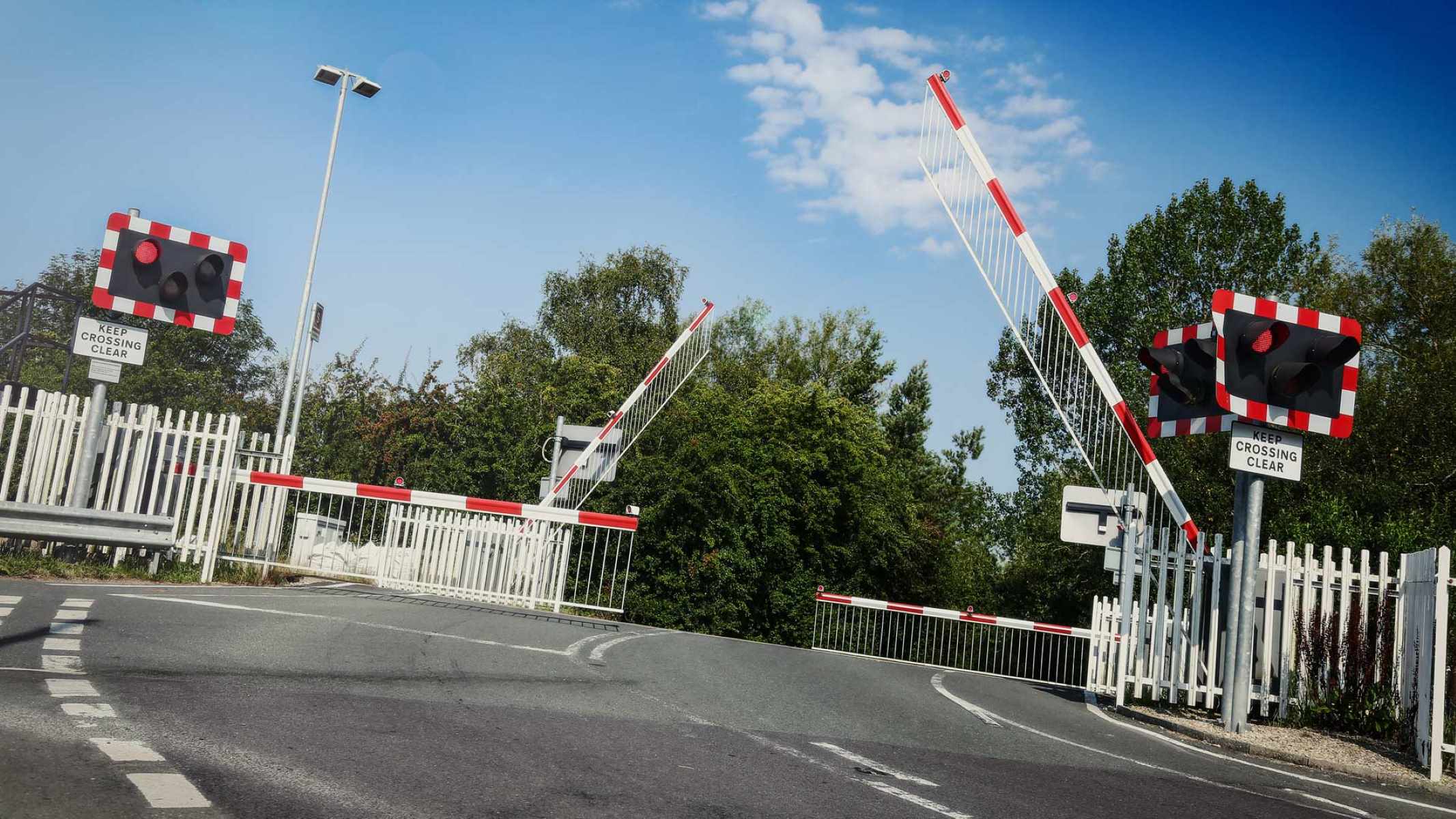Home>Automotive>How To Replace A License Plate Light
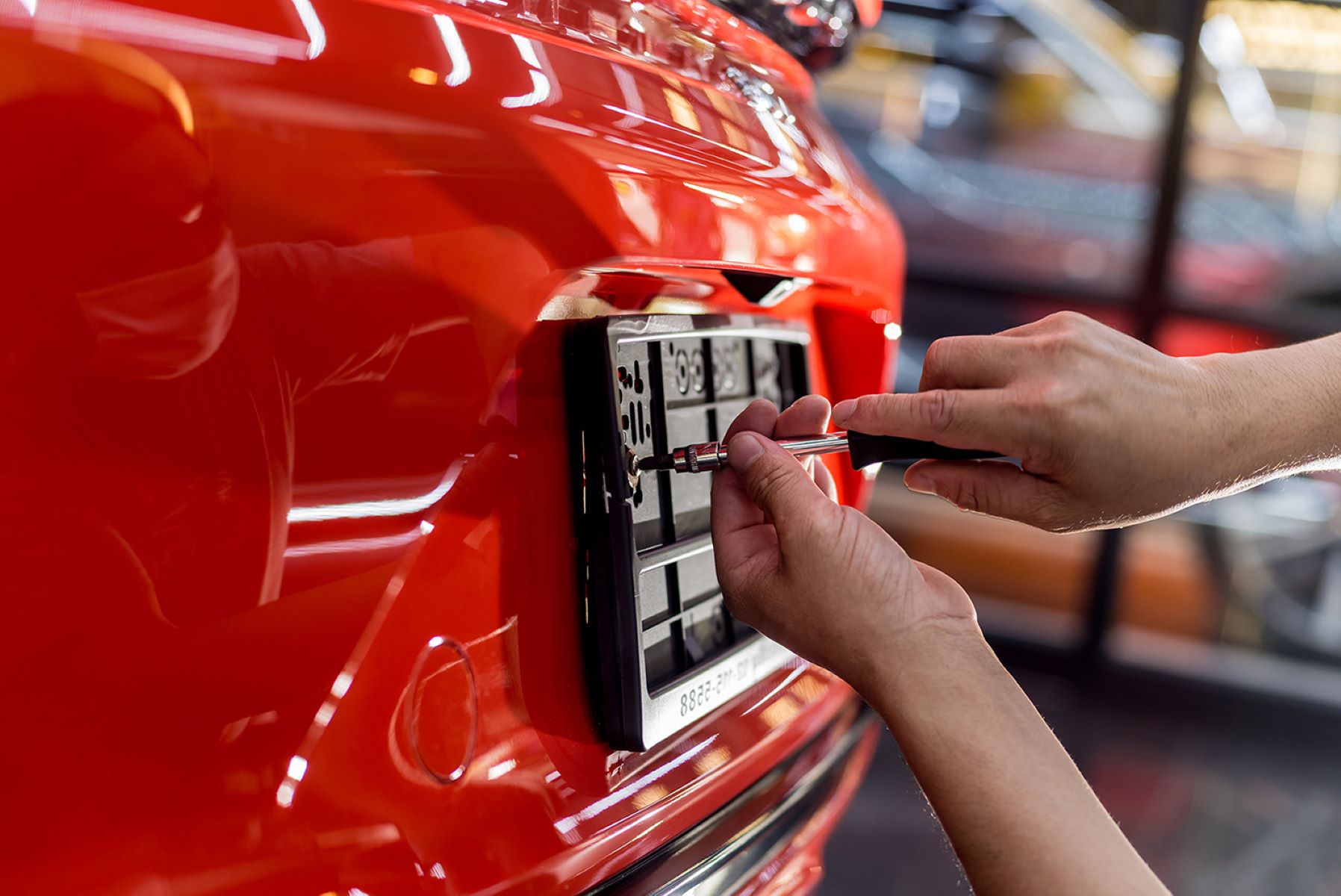

Automotive
How To Replace A License Plate Light
Published: March 4, 2024
Learn how to replace a license plate light in a few simple steps. Keep your automotive lighting in top condition with this easy DIY guide.
(Many of the links in this article redirect to a specific reviewed product. Your purchase of these products through affiliate links helps to generate commission for Regretless.com, at no extra cost. Learn more)
Table of Contents
Introduction
Replacing a license plate light may seem like a minor task, but it plays a crucial role in ensuring your vehicle complies with road regulations and remains visible to other drivers. A malfunctioning license plate light not only poses a potential safety hazard but can also result in a traffic violation. Fortunately, with the right tools and a basic understanding of your vehicle's components, you can easily replace a license plate light on your own.
In this comprehensive guide, we will walk you through the step-by-step process of replacing a license plate light. Whether you're a seasoned DIY enthusiast or a novice looking to gain some hands-on experience, this article will equip you with the knowledge and confidence to tackle this task with ease.
By following these instructions, you can save time and money by avoiding a trip to the auto repair shop. Additionally, taking care of minor maintenance tasks like this can help you develop a deeper understanding of your vehicle's mechanics and foster a sense of independence as a car owner.
So, gather your tools and let's dive into the process of replacing a license plate light. With a little effort and attention to detail, you'll have your license plate shining brightly in no time.
Step 1: Gather Necessary Tools
Before embarking on the task of replacing a license plate light, it's essential to gather the necessary tools to ensure a smooth and efficient process. Here's a list of tools you'll need:
-
Screwdriver Set: A set of screwdrivers, including both flathead and Phillips head varieties, will be essential for removing the screws that secure the license plate light assembly.
-
New Light Bulb: Depending on the specific requirements of your vehicle, you may need to purchase a replacement light bulb. It's advisable to check your vehicle's manual or consult with an auto parts store to ensure you have the correct bulb for your make and model.
-
Gloves: It's always a good idea to wear gloves when working on your vehicle to protect your hands and maintain a secure grip on tools and components.
-
Safety Glasses: While replacing a license plate light may not involve particularly hazardous tasks, wearing safety glasses can provide an extra layer of protection for your eyes, especially when working in low-light conditions.
-
Cleaning Cloth: A clean, lint-free cloth can be handy for wiping down the license plate light assembly and removing any dirt or grime that may have accumulated.
-
Optional: Lubricant: In some cases, the screws securing the license plate light assembly may be stubborn due to rust or corrosion. Having a lubricant such as WD-40 on hand can help loosen these screws and facilitate their removal.
By ensuring you have these tools readily available, you'll be well-prepared to tackle the task of replacing your license plate light. With the right tools at your disposal, you can approach the subsequent steps with confidence, knowing that you have everything you need to complete the job effectively.
Step 2: Locate the License Plate Light
Locating the license plate light is the crucial first step in the process of replacing it. While the specific location may vary slightly depending on the make and model of your vehicle, the general steps for finding and accessing the license plate light assembly are relatively consistent across different cars.
-
Position of the License Plate Light: The license plate light is typically housed within a small assembly located above or below the license plate. In most vehicles, this assembly is designed to be easily accessible for maintenance and replacement purposes. It may be secured in place by screws or clips, and its design can vary from a compact integrated unit to a separate housing with individual light bulbs.
-
Examining the License Plate Area: Start by examining the area around your license plate. Look for a small plastic or metal housing that contains the license plate light. This housing may be directly above the license plate, below it, or on either side, depending on the vehicle's design.
-
Illumination and Wiring: If your license plate light is currently functioning, it can be helpful to turn on your vehicle's lights to illuminate the area and locate the specific housing of the license plate light assembly. Additionally, tracing the wiring from the license plate area to the vehicle's electrical system can provide further insight into the location of the light assembly.
-
Refer to the Owner's Manual: If you encounter difficulty locating the license plate light, referring to your vehicle's owner's manual can provide valuable guidance. The manual often includes diagrams and instructions for accessing and replacing various components, including the license plate light assembly.
-
Accessibility and Removal: Once you have identified the location of the license plate light assembly, assess its accessibility. Depending on the design, you may need to remove a cover or access panel to reach the light bulbs. In some cases, the entire assembly may need to be detached from the vehicle to access the bulbs.
By carefully locating the license plate light and understanding its housing and accessibility, you are now prepared to move on to the next step of the replacement process. With a clear understanding of where the light assembly is situated, you can proceed confidently to the subsequent steps, ensuring a smooth and efficient replacement process.
Step 3: Remove the Old Light Bulb
Removing the old light bulb is a crucial step in the process of replacing a license plate light. It requires careful attention to detail and a methodical approach to ensure the safe and effective removal of the old bulb. Here's a detailed guide on how to remove the old light bulb from the license plate light assembly:
-
Disconnect the Power Source: Before handling the light bulb, it's important to ensure that the power source to the license plate light is disconnected. This can typically be achieved by turning off the vehicle's lights and, if possible, removing the fuse or disconnecting the battery to prevent any electrical mishaps.
-
Accessing the Bulb Housing: Depending on the design of the license plate light assembly, you may need to remove a cover or access panel to reach the old light bulb. In some cases, the entire assembly may need to be detached from the vehicle to access the bulb housing. Carefully inspect the assembly to identify the method of accessing the bulb housing.
-
Identify the Bulb Socket: Once you have accessed the bulb housing, locate the bulb socket. This is the component that holds the old light bulb in place. The socket may be secured by a twist-lock mechanism or a retaining clip, depending on the specific design of the assembly.
-
Remove the Bulb: With the bulb socket identified, proceed to remove the old light bulb. If the socket features a twist-lock mechanism, twist it counterclockwise to release the bulb. If a retaining clip is present, carefully disengage it to free the bulb from the socket. Exercise caution to avoid damaging the bulb or the socket during this process.
-
Inspect the Bulb and Socket: Once the old bulb is removed, take a moment to inspect both the bulb and the socket. Check for any signs of damage, corrosion, or discoloration. If the bulb appears to be in good condition and the issue lies elsewhere, such as a faulty connection, it may be worth testing the new bulb in the socket before proceeding further.
By following these steps, you can safely and effectively remove the old light bulb from the license plate light assembly. With the old bulb out of the way, you are now ready to proceed to the next step of installing the new light bulb and completing the replacement process.
Step 4: Install the New Light Bulb
With the old light bulb successfully removed, it's time to proceed with installing the new light bulb in the license plate light assembly. This step requires precision and attention to detail to ensure that the new bulb is securely in place and properly connected. Here's a detailed guide on how to install the new light bulb:
-
Select the Correct Bulb: Before proceeding, ensure that you have the correct replacement light bulb for your vehicle's license plate light. Refer to your vehicle's manual or consult with an auto parts store to confirm the specific bulb type and size required for your make and model.
-
Inspect the Socket: Take a moment to inspect the bulb socket for any signs of damage, corrosion, or debris. If necessary, clean the socket using a dry cloth to ensure a clean and secure connection for the new bulb.
-
Insert the New Bulb: Carefully insert the new light bulb into the socket, ensuring that it is properly aligned and seated securely. If the bulb features a twist-lock mechanism, follow the manufacturer's instructions to lock it into place. If a retaining clip is present, engage it to secure the bulb within the socket.
-
Test the Bulb: Before reassembling the license plate light assembly, it's advisable to test the new bulb to ensure that it functions properly. Reconnect the power source to the license plate light and turn on your vehicle's lights to verify that the new bulb illuminates as expected.
-
Secure the Bulb Housing: If the bulb functions correctly, proceed to secure the bulb housing back into place. If the assembly was detached for bulb replacement, reattach it to the vehicle using the appropriate fasteners and ensure that it is firmly secured.
-
Reconnect the Power Source: Once the new bulb is installed and the housing is secured, reconnect the power source to the license plate light. This may involve reinstalling a fuse, reconnecting the battery, or simply turning on the vehicle's lights, depending on the specific disconnection method used earlier.
By following these steps, you can effectively install the new light bulb in the license plate light assembly, ensuring that it functions properly and complies with road regulations. With the new bulb in place, you are now ready to proceed to the final step of testing the replacement light bulb to confirm its functionality.
Read more: How To Light An Incense Cone
Step 5: Test the New Light Bulb
After installing the new light bulb in the license plate light assembly, it's crucial to verify its functionality through a thorough testing process. This step ensures that the replacement bulb is operating as intended and that the license plate light is illuminating properly. Here's a detailed guide on how to test the new light bulb:
-
Turn On the Vehicle's Lights: Start by turning on your vehicle's lights, including the tail lights and, if applicable, the specific setting for the license plate light. This will activate the electrical circuit for the license plate light and allow you to assess the performance of the new bulb.
-
Inspect the Illumination: With the lights on, step outside the vehicle and visually inspect the license plate area. Verify that the new light bulb is emitting a consistent and bright illumination. Ensure that the entire license plate is adequately illuminated, as this is essential for maintaining visibility and compliance with road regulations.
-
Check for Flickering or Dimness: While observing the license plate light, pay attention to any signs of flickering or dimness in the illumination. These issues may indicate a poor connection, a faulty bulb, or underlying electrical issues. If you notice any irregularities, it's advisable to revisit the installation process and inspect the bulb and socket for potential issues.
-
Test the License Plate Light at Night: For a comprehensive assessment, consider conducting a test of the license plate light in low-light or nighttime conditions. This can provide a more accurate evaluation of the bulb's performance, as it simulates real-world scenarios where visibility is crucial for other drivers and law enforcement.
-
Verify Compliance with Regulations: In addition to functionality, ensure that the illumination from the license plate light complies with local regulations regarding brightness and visibility. Different jurisdictions may have specific requirements for license plate lighting, and it's important to adhere to these standards to avoid potential citations or safety concerns.
-
Address Any Issues Promptly: If you encounter any issues during the testing process, such as inconsistent illumination or persistent flickering, it's essential to address them promptly. This may involve rechecking the bulb installation, inspecting the electrical connections, or seeking professional assistance if the problem persists.
By meticulously testing the new light bulb and confirming its proper operation, you can have confidence in the effectiveness of the replacement process. A well-functioning license plate light not only enhances the visibility of your vehicle but also contributes to overall road safety and compliance with legal requirements.
Conclusion
In conclusion, the process of replacing a license plate light is a manageable task that can be accomplished with the right tools, attention to detail, and a methodical approach. By following the step-by-step guide outlined in this article, you can confidently tackle this maintenance task and ensure that your vehicle remains compliant with road regulations.
Taking the initiative to replace a malfunctioning license plate light not only contributes to your safety on the road but also demonstrates a proactive approach to vehicle maintenance. By addressing minor issues such as a faulty light bulb, you can prevent potential traffic violations and maintain optimal visibility for your vehicle, especially during nighttime driving conditions.
Furthermore, the DIY nature of replacing a license plate light empowers car owners to take control of basic maintenance tasks, fostering a sense of independence and self-reliance. This hands-on approach allows individuals to develop a deeper understanding of their vehicle's components and electrical systems, leading to a greater appreciation for the intricacies of automotive maintenance.
Additionally, by completing this task independently, you can save time and money that would have been spent on a visit to an auto repair shop. This cost-effective approach aligns with the principles of responsible vehicle ownership and encourages a proactive mindset when it comes to addressing minor maintenance requirements.
As you embark on the journey of maintaining and caring for your vehicle, remember that even seemingly minor components such as the license plate light play a significant role in ensuring your safety and compliance with traffic laws. By staying proactive and attentive to the condition of all vehicle lighting, you contribute to a safer driving environment for yourself and others on the road.
In closing, the process of replacing a license plate light serves as a reminder of the importance of regular vehicle maintenance and the empowerment that comes with mastering basic automotive tasks. With the knowledge gained from this guide, you are well-equipped to handle this maintenance task with confidence and precision, ensuring that your vehicle's license plate shines brightly and securely, enhancing both visibility and safety on the road.
